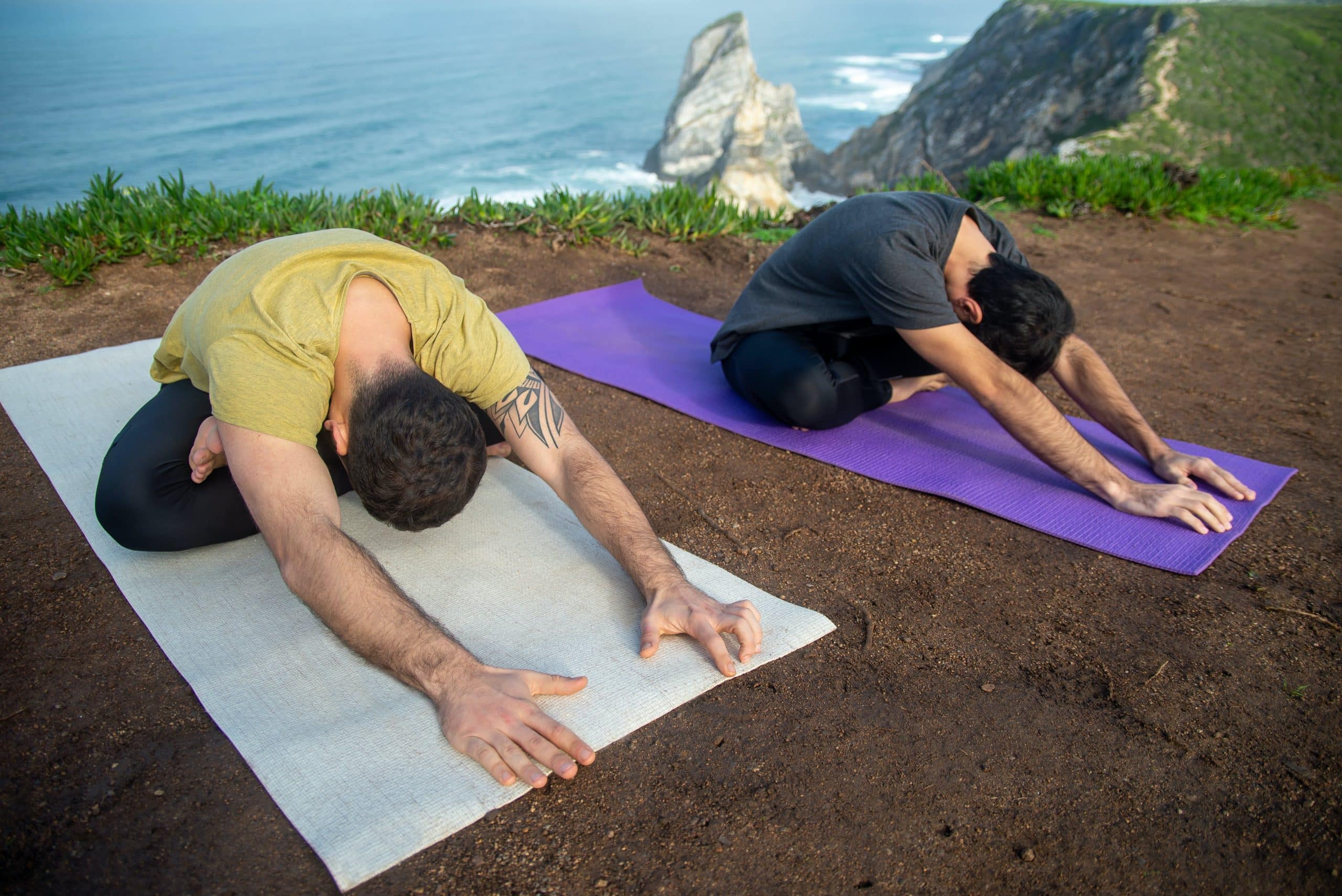In today’s fast-paced world, where health often takes a backseat to our busy schedules, it’s easy to overlook the simple yet powerful practice of stretching. Regular stretching is an integral part of maintaining flexibility, range of motion, and muscle health, yet it is frequently underestimated in its ability to enhance overall well-being. By allocating time to lengthen and extend your muscles through various stretches, you can experience a multitude of health benefits that can improve your daily life.
Understanding the nuances between dynamic and static stretching, recognizing the beneficial impact stretching has on your body, and implementing a consistent stretching routine are all essential steps towards boosting your physical health. Whether you’re a seasoned athlete, a weekend warrior, or someone looking to alleviate the discomfort of a sedentary lifestyle, embracing the habit of stretching can lead to profound improvements in your physical and mental state.
Have you seen this : The secrets of an anti-aging diet
With a focus on the professional insights from sports medicine, physical therapy, and fitness experts, this article delves into the myriad of health benefits that regular stretching provides. By exploring the advantages of different stretching techniques and the profound effects they can have, you’ll be equipped with the knowledge to incorporate a tailored stretching routine into your daily regimen.
The Science Behind Stretching and Muscle Health
Stretching is not merely a warm-up or cool-down activity; it’s a fundamental aspect of muscle health. Muscles are made of fibrous tissues that contract and lengthen to produce movement. Over time, without adequate stretching, these fibers can shorten, resulting in decreased flexibility and potential pain.
Also to discover : How to manage anxiety in high-pressure situations?
Dynamic stretching involves moving parts of your body and gradually increasing reach, speed of movement, or both. It is generally performed before a workout to get the muscles ready for physical activity. Dynamic stretches might include leg swings, arm circles, or torso twists—movements that increase blood flow to the muscles and prepare them for the demands of a workout.
On the other hand, static stretching consists of stretching a muscle to the point of mild discomfort and holding that position. Static stretches are typically done after exercise to help with cooldown and recovery. Examples include bending over to touch your toes, or pulling your arm across your chest to stretch the shoulder. These held stretches improve flexibility over time and can aid in the release of muscle tension.
When muscles are properly stretched, the fibers realign in a way that allows for a more efficient movement pattern and a greater range of motion. Regular stretching can therefore help prevent injuries by ensuring muscles are less tight and more resilient to the stress and strain of physical activity.
Enhancing Flexibility and Range of Motion
Flexibility is the ability of a muscle or group of muscles to lengthen without injury. Achieving a full range of motion around a joint is closely linked to flexibility and is vital for performing everyday activities with ease, as well as for excelling in athletic endeavors.
Increased flexibility through regular stretching can lead to numerous benefits. For one, it can help maintain the balance of muscle strength around a joint, reducing the risk of injury. When muscles surrounding a joint are equally flexible, they exert similar forces on the joint, leading to less wear and tear. In contrast, an imbalance can lead to joint and muscle pain.
Stretching also assists in correcting posture by lengthening tight muscles that pull areas of the body away from their intended position. For instance, many people experience lower back pain due to prolonged sitting and the associated tightness in the hip flexors. Stretching these muscles can alleviate pain and improve spinal alignment.
Incorporating a variety of stretches into your routine ensures that all muscle groups are addressed, promoting an overall balance in muscle health and joint function. Whether it’s a stretch held for a few seconds or a dynamic stretch that moves through different positions, the goal is to enhance flexibility and increase flexibility across different areas of the body.
Preventing Injury and Reducing Pain
The connection between regular stretching and injury prevention is well-documented in sports medicine. Stiff muscles are more prone to tears and strains because they cannot withstand the quick, forceful movements often required during physical activity. By contrast, supple, stretched muscles can absorb quick changes in direction or speed, making them less susceptible to injury.
Stretching can also play a significant role in pain reduction. For instance, tight muscles can lead to muscular imbalances that can cause discomfort and pain in different body parts. Regular stretching helps alleviate muscle tightness, restoring the balance and reducing the strain on muscles and joints.
Physical therapists often prescribe targeted stretches for patients recovering from injuries or experiencing chronic pain. These stretches are designed to strengthen weak muscles, loosen tight ones, and increase overall flexibility, contributing to faster recovery and reduced pain.
Engaging in a stretching routine before and after physical exertion also prepares the muscles for the stress of exercise and helps in the recovery process afterward. This can prevent the onset of muscle soreness and make recovery from exertion quicker and less painful.
Boosting Circulation and Enhancing Physical Performance
Stretching promotes increased blood flow to the muscles, which can lead to a host of benefits for your health and physical activity. Improved circulation brings more oxygen and nutrients to the muscles, enhancing energy production and the removal of waste products, which can help prevent muscle fatigue and soreness.
For athletes, the benefits of increased blood flow extend to performance. Enhanced circulation can lead to increased muscular strength and endurance, allowing for more extended periods of exertion and improved overall athletic output. Dynamic stretches, in particular, have been shown to improve performance in sports that require explosive movements.
Furthermore, regular stretching can contribute to better stamina, as muscles with a good blood supply can work longer before tiring. This can be a boon not only for sports performance but also for daily activities that require sustained physical effort.
Incorporating Stretching into Your Daily Routine
Despite the evidence supporting the importance of stretching, it can sometimes be challenging to incorporate it into your daily schedule. However, the key to reaping the benefits of stretching is consistency. Even a short daily stretching routine can make a significant difference in your flexibility, pain levels, and overall health.
To start, you can integrate stretching into your existing workout regimen by adding a dynamic stretching warm-up and a static stretching cool-down. For those not engaged in regular exercise, stretching can be a standalone activity—setting aside even 10 to 15 minutes a day for a series of stretches can be effective.
It’s also helpful to consult with a physical therapist or certified fitness professional to create a stretching program tailored to your body’s needs. This can be particularly useful for addressing specific issues, such as chronic pain or recovering from an injury.
Remember to listen to your body when stretching. While a mild tension should be felt, stretching should never cause pain. If it does, it’s a sign that you may be pushing too hard, which could result in an injury.
In conclusion, regular stretching is a fundamental component of health that supports muscle function, flexibility, and overall well-being. It can enhance your range of motion, reduce your risk of injury, alleviate pain, boost circulation and improve physical performance.
Whether through dynamic or static methods, incorporating a regular stretching routine into your day can have profound benefits that resonate beyond the moments spent on your yoga mat or at your desk taking a stretch break. To optimize your health and physical capabilities, prioritize stretching as a daily habit, and experience the difference it makes in your life. Remember, the key to success with stretching is regularity and proper technique, so take the time to stretch correctly, and your body will thank you for it.











